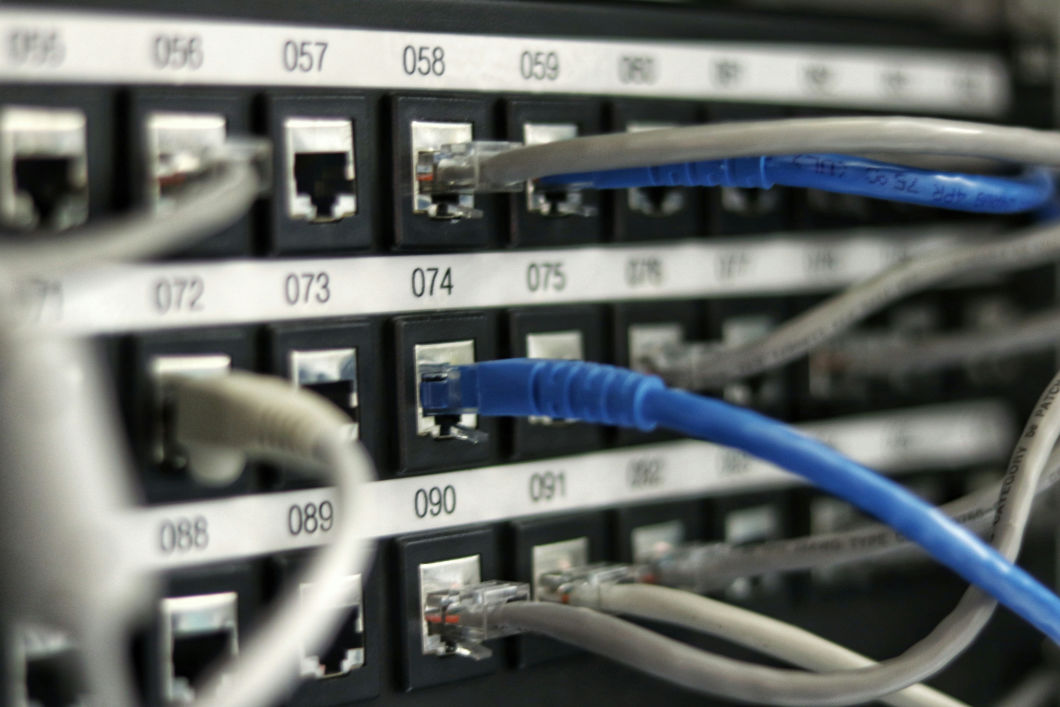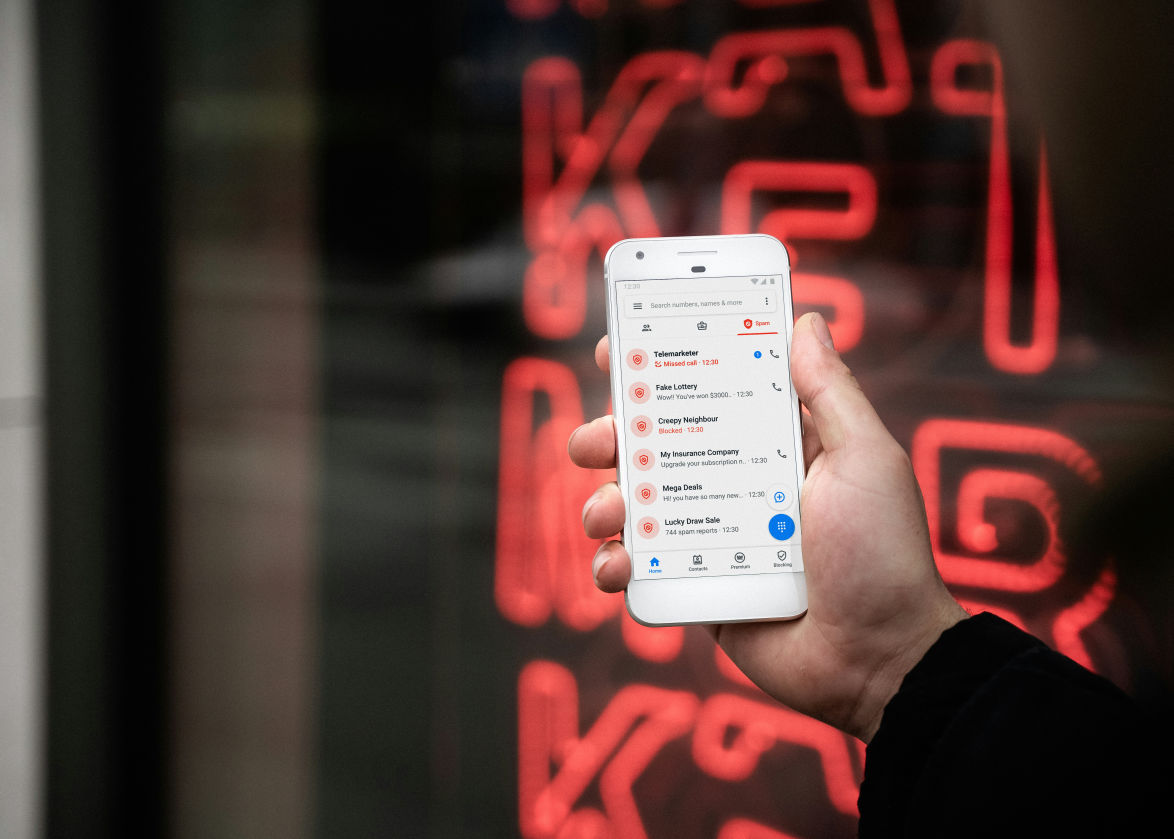Understanding the Impact of a Ping of Death Attack

A Ping of Death attack is a form of cyber assault that exploits the vulnerabilities in the Internet Protocol (IP) to send malicious pings to a target, potentially causing system crashes or instabilities. By understanding the Ping of Death, we arm ourselves against a crucial vector of cyber threats.
How Does a Ping of Death Attack Work?
Ping of Death attacks manipulate packet size and IP protocol weaknesses to overwhelm target systems. These attacks exploit the maximum packet size limit of IP packets (65,535 bytes) by sending fragments that, when reassembled, exceed this limit, causing buffer overflows and system crashes.
The Ping of Death (PoD) represents an older cybersecurity threat, serving as a specific category within the broader spectrum of Distributed Denial of Service (DDoS) attacks. For those interested in deepening their understanding of DDoS attacks, Cloudflare's Learning Center offers comprehensive resources. Additionally, Cloudflare stands out as a valuable technology partner for us.
You can explore more about DDoS attacks and other cybersecurity topics at Cloudflare's Learning Center: Visit Cloudflare Learning Center.

Why We Should Know About Ping of Death

Understanding Ping of Death (PoD) attacks is crucial for bolstering cybersecurity measures. This knowledge enables individuals and organizations to identify and mitigate vulnerabilities within their network infrastructures, thereby preventing potential unauthorized access and data breaches. The PoD attack exploits the limitations of the Internet Protocol (IP) by sending maliciously crafted packets that exceed the maximum allowed size, causing targeted systems to freeze, crash, or reboot.
What Type of Attack is The Ping of Death
The Ping of Death attack is a type of Denial of Service (DoS) attack that exploits vulnerabilities in network protocols, specifically the Internet Control Message Protocol (ICMP). It involves sending oversized or fragmented ICMP packets to the target system, causing it to crash or become unresponsive. By exploiting flaws in packet handling, this attack can disrupt network communication and impair the availability of services hosted on the targeted system or network.
How Ping of Death Affects Target Systems
The Ping of Death (PoD) attack can severely disrupt target systems, causing system crashes, freezes, or significantly reduced network performance. This form of cyber attack leverages oversized or malformed packets to exploit vulnerabilities in the Internet Protocol (IP) stack, overwhelming system resources. The impact highlights the critical need for implementing robust security measures to detect and mitigate such threats, ensuring the stability and reliability of networked systems and protecting them from potential data breaches and operational downtime.
Technical Aspects of Ping of Death Attack
The technical basis of Ping of Death (PoD) attacks lies in sending malicious packets that exceed the maximum IP size limit of 65,535 bytes, exploiting vulnerabilities in the target's system. This causes buffer overflow errors, leading to system instability or crashes. Understanding these technicalities highlights their potential effectiveness and underscores their significance as a cybersecurity concern, emphasizing the need for robust protective measures.
Internet Protocol (IP) and its Role in Ping of Death
The Internet Protocol (IP) underpins all Internet communications, serving as a crucial foundation. Ping of Death attacks exploit this core component by sending oversized packets, disrupting the normal functioning of targeted systems. This exploitation showcases the vulnerability of fundamental internet protocols to cyber threats, emphasizing the importance of cybersecurity vigilance.
IP Fragmentation and its Relation to Ping of Death
IP fragmentation is designed to break large packets into smaller, manageable fragments for efficient transmission. Attackers exploit this feature by crafting oversized packets that, when reassembled, exceed system capacity, bypassing network defenses. This technique results in payloads too large for the target systems to process, leading to potential disruptions and vulnerabilities.
ICMP Echo Request (Ping Request) and ICMP Echo Reply
Ping and ICMP (Internet Control Message Protocol) are standard protocols used for testing network connections. In Ping of Death (PoD) attacks, these innocuous requests are manipulated to form malicious payloads. Attackers alter these protocols to send oversized or malformed packets, exploiting system vulnerabilities to cause disruption or unauthorized access, showcasing their misuse in cyberattacks.
Invalid Packet and its Impact on Target Systems
Invalid or malformed packets, when introduced into a network, can lead target systems to behave unpredictably. This erratic behavior may expose vulnerabilities or cause system crashes, highlighting the critical importance of robust network security measures. Such packets exploit weaknesses in system protocols, underscoring the need for continuous monitoring and updates to safeguard against these threats.
IP Header and its Significance in Ping of Death Attacks
The IP header plays a crucial role in network communication, detailing packet size and fragmentation rules. In a Ping of Death attack, malicious actors manipulate this information, altering packet size or fragmentation details to overwhelm target systems. This manipulation facilitates the attack by exploiting vulnerabilities related to how systems process and reassemble fragmented packets.
Packet Size and its Effect on Ping of Death
In Ping of Death attacks, the size of IP packets is manipulated to exceed the maximum allowed limit, playing a pivotal role in their effectiveness. By sending packets larger than the system can handle, attackers induce buffer overflow, a critical vulnerability that disrupts services and compromises system stability, highlighting the importance of stringent packet size checks.

Denial of Service (DoS) Attacks and Ping of Death
Ping of Death is a form of Denial of Service (DoS) attack designed to render a computer or network resource unavailable to its intended users. It operates by inundating the target with IP packets that exceed the maximum allowable size, causing system overload or failure. This tactic exploits vulnerabilities in handling large packets, disrupting access and services.
Is Ping of Death a DDoS Attack?
While Ping of Death attacks can be executed as part of Distributed Denial of Service (DDoS) campaigns, they are distinct in their methodology and impact, focusing on exploiting IP packet vulnerabilities rather than simply flooding the target with traffic.
What is the Impact of DDoS and Ping of Death on Network Performance?
Both DDoS and ping-of-death attacks can severely degrade network performance, leading to downtime, loss of productivity, and potential data breaches. Understanding these impacts is crucial for developing effective defense strategies.
Ping of Death Attack in Cyber Security
Within cyber security, Ping of Death attacks pose a considerable threat by exploiting network protocol vulnerabilities to initiate attacks resulting in data loss, service disruption, and compromised security. These attacks manipulate protocol weaknesses to overload systems, demonstrating the critical need for vigilant security measures to protect against such sophisticated threats and ensure the integrity of digital infrastructures.
Consequences of Ping of Death
Ping of Death attacks have consequences that surpass technical disruptions, affecting organizational operations, security posture, and reputation. These attacks can lead to significant operational downtime, compromise sensitive information, and erode trust among stakeholders, underscoring the importance of robust cybersecurity measures to mitigate the far-reaching impact of such malicious activities on an organization's overall health and credibility.
System Crashes and Freezes Caused by Ping of Death
One of the direct consequences of a Ping of Death attack is the likelihood of system crashes and freezes, leading to operational halts and necessitating substantial resources for resolution. This immediate effect disrupts the smooth functioning of affected systems, compelling organizations to allocate time, technical expertise, and financial resources to restore normal operations and secure their networks against further incidents.
Blue Screen of Death (BSOD) and Ping of Death

Windows systems, in particular, may display the dreaded Blue Screen of Death, indicating a fatal system error often triggered by severe system overloads like those caused by Ping of Death attacks.
Target Machine Vulnerabilities Exploited by Ping of Death
Ping of Death attacks exploit specific vulnerabilities in target machines, such as inadequate buffer sizes and poor handling of IP packet reassembly, underscoring the need for regular system updates and patches.
Impact of Ping of Death on Network Performance
Network performance can be significantly degraded by Ping of Death attacks, resulting in slow response times, lost connectivity, and disrupted services, affecting both internal operations and customer-facing applications.
Preventing Ping of Death Attacks
Preventing Ping of Death attacks necessitates a multifaceted strategy, combining technical safeguards like packet filtering and anomaly detection, regular system and software updates to patch vulnerabilities, and the implementation of comprehensive security policies. This approach ensures a robust defense mechanism against such cyber threats.
How to Prevent a Ping of Death attack?
Preventing a Ping of Death attack involves implementing measures such as packet filtering at network boundaries to block oversized or fragmented ICMP packets. Additionally, keeping systems updated with security patches and configuring network devices to drop or reject ICMP packets that exceed standard size limits can mitigate vulnerabilities. Intrusion detection and prevention systems can also be deployed to detect and block suspicious network traffic associated with Ping of Death attacks.
Update and Patch Systems
Regular updates and patching of systems are crucial defenses against Ping of Death attacks, as they address vulnerabilities that these attacks target. By closing these security gaps, organizations make it significantly more challenging for attackers to exploit their networks, thereby enhancing their overall security posture and reducing the risk of successful cyber intrusions.Preventing a Ping of Death attack involves implementing measures such as packet filtering at network boundaries to block oversized or fragmented ICMP packets. Additionally, keeping systems updated with security patches and configuring network devices to drop or reject ICMP packets that exceed standard size limits can mitigate vulnerabilities. Intrusion detection and prevention systems can also be deployed to detect and block suspicious network traffic associated with Ping of Death attacks.
Configure Firewalls
Firewalls serve as a critical first line of defense against Ping of Death attacks by being configured to identify and block malicious IP packets, particularly those that are oversized. This preventative measure effectively stops such packets from penetrating the network, significantly reducing the risk of these attacks disrupting system operations or compromising network security.
Enable Intrusion Detection and Prevention Systems (IDPS)
Intrusion Detection and Prevention Systems (IDPS) offer a crucial layer of security against Ping of Death attacks by monitoring network traffic in real-time for signs of malicious activity. These solutions can detect and mitigate such attacks as they occur, enhancing an organization's defensive posture by proactively identifying and addressing potential threats before they can cause harm.
Limit ICMP Traffic
Restricting ICMP (Internet Control Message Protocol) traffic is an effective strategy to mitigate the risk of Ping of Death attacks. By limiting attackers' ability to send malicious ping requests, organizations can significantly reduce the vulnerability of their networks to these types of cyber threats, thereby enhancing their overall security posture.
Disable ICMP Echo Requests
Disabling ICMP Echo Requests on external-facing devices acts as a preventive measure against Ping of Death attacks. This approach restricts attackers from exploiting the ICMP protocol to initiate these attacks, thereby safeguarding the devices from being overwhelmed by malicious traffic and enhancing the security of the network's perimeter against unauthorized access attempts.
Implement Network Segmentation

Network segmentation can effectively contain Ping of Death attacks by isolating affected segments, limiting their spread. This strategy minimizes the overall impact on the network's functionality and integrity, ensuring that only a portion of the network is compromised, rather than the entire infrastructure.
Use Anti-DDoS Services
Anti-DDoS services can provide protection against a wide range of DDoS attacks, including Ping of Death, by filtering traffic and blocking malicious packets before they reach the target network.
Monitor and Analyze Network Traffic
Continuous monitoring and analysis of network traffic play a crucial role in early identification and response to Ping of Death attacks, potentially preventing significant damage. This proactive approach enables timely detection of anomalies, allowing for quick mitigation actions to safeguard network integrity and operational continuity.
Educate and Train Staff
Training staff on the signs of Ping of Death and other cyber threats can improve response times and prevent successful attacks through increased vigilance.
Implement Quality of Service (QoS)
Implementing Quality of Service (QoS) policies allows for the prioritization of critical network traffic, effectively mitigating the impact of Ping of Death attacks on essential services and applications. This ensures that vital operations maintain performance and availability even under attack conditions.
Use Secure Network Architectures
Designing networks with a security-focused approach minimizes vulnerabilities and enhances protection against Ping of Death and other cyber threats. This proactive strategy incorporates robust security measures from the outset, ensuring a stronger defense against potential attacks and safeguarding network integrity.
Schedule Regular Security Audits and Assessments
Regular security audits and assessments are vital for identifying potential vulnerabilities within network infrastructures, ensuring that defenses remain effective against Ping of Death attacks and other cyber threats. These evaluations help in pinpointing weak spots, allowing for the timely implementation of corrective measures and updates, thereby strengthening the overall security posture and resilience of the system against such attacks.
Ping of Death in Cloud Environments
Cloud environments are not immune to Ping of Death attacks. However, cloud providers often have robust security measures in place to detect and mitigate such threats, offering an additional layer of protection for cloud-hosted services and applications.
Related Attacks and Techniques
Ping of Death attacks are part of a broader spectrum of cyber threats, including Ping Flood attacks, Packet Oversize Denial (POD) attacks, and Message Protocol attacks, each exploiting different aspects of network protocols and systems.
Ping Flood Attacks and Their Relation to Ping of Death
Ping Flood attacks overwhelm a target with an excessive volume of ping requests, aiming to exhaust network resources and bandwidth, leading to service degradation. Conversely, Ping of Death attacks exploit vulnerabilities by sending oversized packets that exceed the system's processing capacity, causing crashes or instability. While both disrupt services, their tactics differ: one floods the system, and the other exploits packet size limitations.
Packet Oversize Denial (POD) Attacks
POD (Ping of Death) attacks exploit the maximum packet size limit inherent in network protocols, sending packets that exceed this limit to target systems. This method aims to overwhelm and disrupt system operations, underscoring the critical need for robust packet handling mechanisms. Such defenses ensure systems can effectively manage, filter, or block malicious packets, thereby maintaining stability and preventing potential service disruptions.
Message Protocol Attacks and Ping of Death
Message Protocol attacks exploit vulnerabilities in various network protocols, including ICMP, demonstrating the interconnected nature of cyber threats and the need for comprehensive security strategies.
What is the Difference Between a Smurf Attack and a Ping of Death Attack?
Smurf attacks involve amplifying network traffic to overwhelm a target, using spoofed broadcast ping messages, while Ping of Death attacks focus on exploiting packet size vulnerabilities to cause system failures.
Ping of Death and Zero-Day DoS Attack
Zero-Day DoS attacks exploit newly discovered vulnerabilities before developers can patch them, representing a significant threat due to their unpredictability and potential for widespread damage. Unlike the Ping of Death, which targets specific ICMP packet vulnerabilities in older systems, Zero-Day attacks can leverage any unknown flaw across various system components, making them a pressing concern for modern cybersecurity efforts. This highlights the importance of proactive security measures and rapid response strategies to defend against the ever-evolving landscape of cyber threats.
Conclusion
Ping of Death attacks, though less common today due to advances in network security remain a pertinent example of the ever-present threat of cyber attacks. Understanding their mechanics, impact, and prevention strategies is crucial for maintaining a secure digital environment. By staying informed and implementing robust security measures, we can protect our networks and data from these and other cyber threats.
For further information on securing your digital assets and to learn more about our advanced solutions, visit our services pages at RedZone's Virtual Security Operations to discover how we can help you against a Ping of Death attack. You can also explore RedZone Products, and access our comprehensive resources.
In the face of evolving cyber threats, continuous vigilance, advanced security technologies, and comprehensive education and training are our best defense against the likes of Ping of Death attacks and beyond. If you're looking to enhance your organization's cyber defense, contact us today.

Ping of Death FAQs
Common misconceptions about Ping of Death attacks and how can they be clarified?
Common misconceptions about Ping of Death attacks include beliefs that they are outdated and ineffective against modern systems. However, while contemporary devices and software often have protections against such exploits, vulnerabilities can still exist, especially in less updated or non-mainstream systems, making understanding and vigilance against these attacks relevant today.
In the context of IoT devices, how susceptible are these to Ping of Death attacks?
IoT devices vary widely in their susceptibility to Ping of Death attacks, largely due to differences in operating systems, security updates, and hardware capabilities. Many IoT devices operate with minimal security features and infrequent updates, making them potentially vulnerable. However, the impact of such attacks on IoT devices also depends on the network architecture and the specific protocols they use for communication.
How do virtual private networks (VPNs) affect the vulnerability of a network to Ping of Death attacks?
Virtual Private Networks (VPNs) can both mitigate and obscure the risks associated with Ping of Death attacks. By encrypting data packets, VPNs can prevent attackers from easily exploiting vulnerabilities in the network's infrastructure. However, if the VPN server itself is not properly secured or configured, it could become a bottleneck or target, potentially increasing vulnerability to such attacks indirectly.
Can a Ping of Death attack be launched from a mobile device?
Yes, a Ping of Death attack can be launched from a mobile device. Given the advanced capabilities of modern smartphones, they can run applications or scripts capable of generating and sending malicious packets, including oversized or malformed pings, to target systems, demonstrating the versatility of attack vectors in cybersecurity threats
 Security Updates
Security UpdatesUnderstanding IT Compliance: Scope, Benefits, and Challenges
Discover what IT compliance is, its importance, benefits, risks of non-compliance, frameworks, and how to achieve robust IT compliance in your organization.
 Security Updates
Security UpdatesImplement Secure Browsing with Powerful SSL Decryption
Explore the essentials of SSL decryption, its importance, challenges, and best practices for enhancing security and compliance for business in a detailed guide
 Security Updates
Security UpdatesTransitioning from Proxy Firewalls to Endpoint Security
Explore the evolution from proxy firewalls to endpoint security, enhanced threat detection, data encryption, and comprehensive protection for modern networks.
 Security Updates
Security UpdatesExpert IT Risk Assessment: Protect Your Business Today!
Mitigate potential IT threats with our comprehensive risk assessment guide, ensuring your digital infrastructure. Ensure your business is secure an...
 Security Updates
Security UpdatesEssential Guide to Best Practices in Compliance Security
Explore essential strategies for compliance security in this comprehensive guide. Learn about safeguarding your business and meeting regulatory sta...
 Security Updates
Security UpdatesSecure Your Data with Expert Cloud Database Solutions
Learn efficient solutions and secure your cloud databases with encryption and compliance features, ensuring data safety and privacy across all plat...
 Security Updates
Security UpdatesA Guide to Cloud Network Technology: Benefits and Types
Unlock the potential of cloud network technology for seamless connectivity. Learn and scale solutions that drive business innovation and growth via...
 Security Updates
Security UpdatesAffordable Managed IT Services for Small Businesses
Explore top-managed IT services for small businesses to boost efficiency and security. Get expert insights and practical tips to optimize your IT o...
 Security Updates
Security UpdatesSecure Your Network with Gateway Security Solutions
Explore the essentials of gateway security: learn about its importance for network protection and best practices to safeguard your digital assets e...
 Security Updates
Security UpdatesDisaster Recovery Testing: Ensure Business Continuity
Explore effective disaster recovery testing strategies in this guide to maintain business continuity, prevent data loss, and minimize downtime duri...
 Security Updates
Security UpdatesMaximizing Security: Vulnerability Management Lifecycle
Explore the complete guide to the Vulnerability Management Lifecycle to boost your cyber resilience and secure your business IT infrastructure effe...
 Security Updates
Security UpdatesYour Network with Endpoint Security Management
Explore our comprehensive guide on Endpoint Security Management to understand its importance, how it works, and best practices for robust network s...
 Security Updates
Security UpdatesEnsuring Security Compliance: Tips, Insights & Strategies
Discover the essentials of security compliance, its importance, frameworks, and tools. Learn how to protect data and meet regulatory standards effe...
 Security Updates
Security UpdatesBoost Your Security with Internal Penetration Testing
Dive into internal penetration testing with our in-depth guide. Learn the essentials, techniques, and best practices to fortify your cybersecurity ...
 Security Updates
Security UpdatesEgress vs Ingress: A Guide to Data Traffic Management
Understand Egress vs Ingress in data management. Learn and explore their roles, traffic analysis, risks, and best practices for network and cloud s...
 Security Updates
Security UpdatesPrevent Credential Harvesting to Protect Your Precious Data
Understand credential harvesting. Learn how it works, common techniques, its impact, and strategies to prevent and mitigate attacks to secure your ...
 Security Updates
Security UpdatesSecure Your Big Data: Top Solutions for Data Security
Protect your valuable data with our robust big data security solutions. Learn about the threats and Safeguard against cyber threats and ensure comp...
 Security Updates
Security UpdatesSecure Your Network with Advanced Management Solutions
Explore the details of comprehensive network security management: Learn key strategies, best practices, and tools to safeguard your digital environ...
 Security Updates
Security UpdatesGuide to On-Path Attacks: Protecting Your Cybersecurity
Learn about on-path attacks in this comprehensive guide, exploring definitions, types, consequences, and key prevention strategies to safeguard you...
 Security Updates
Security UpdatesExploring Managed Cloud Services: A Comprehensive Guide
Dive into the Managed Cloud Services with our in-depth guide. Explore benefits, types, and best practices to enhance your business's cloud strategy...
 Security Updates
Security UpdatesComprehensive Guide to Ubiquitous Computing: Impact & Future
Explore the details of ubiquitous computing, from its core concepts and layers to its societal impact, key technologies, applications, and future p...
 Security Updates
Security UpdatesClone Phishing Explained: Detection and Prevention Guide
Discover how clone phishing works and its impact. Learn effective strategies to identify, prevent, and respond to these sophisticated email threats...
 Security Updates
Security UpdatesHow to Secure Your Business with Cyber Security Insurance
Explore the essentials of Cyber Security Insurance, covering its importance, types of coverage, benefits, and considerations for businesses in the ...
 Security Updates
Security UpdatesEfficient Data Spooling Solutions For Streamlined Operation
Learn How To Efficiently Manage And Store Your Data With Our Reliable Data Spooling Services. Keep Your Information Organized And Accessible With T...
 Security Updates
Security UpdatesMaximizing Compliance & Risk Management: Expert Strategies
Learn how to ensure business success with effective compliance and risk management strategies. Explore definitions, differences, frameworks, and ch...
 Security Updates
Security UpdatesUnderstanding MDF vs IDF: Key Differences & Benefits
Explore the crucial differences and examples between MDF and IDF in networking, understanding their roles, functions, and impact on network infrast...
 Security Updates
Security UpdatesRedZone Wins CRN's Top Security 100 & MSP 500 Awards 2024
RedZone Technologies earns CRN's Security 100 & MSP 500 Awards, affirming its leadership and innovative approach in the cybersecurity and IT manage...
 Security Updates
Security UpdatesJames Crifasi Speaks on Cybersecurity at Tech Conference
Join James Crifasi, CTO & COO of RedZone Technologies, at the Tech Conference as he explores cybersecurity's role in driving business growth and ad...
 Security Updates
Security UpdatesRedZone's James Crifasi Wins SonicWall's Technical Hero Award
CTO James Crifasi of RedZone Technologies earns SonicWall's Technical Hero of the Year, exemplifying unparalleled dedication to cybersecurity and I...
 Security Updates
Security UpdatesHow to Encrypt Email in Outlook
Learn how to encrypt email in Outlook with our step-by-step guide. Secure your messages using S/MIME, Office 365 Encryption OME, and add-ins for pr...
 Security Updates
Security UpdatesWhat Is Security Monitoring? Importance and Tools
Explore the importance of security monitoring, its key roles, types, and how it protects organizations against threats, ensuring compliance and pro...
 Security Updates
Security UpdatesServer 2012 R2 End of Life: Implications and Next Steps
Learn about Server 2012 R2 end of life: Understand its impact, key dates, risks post-EOL, and explore upgrade options and migration strategies for ...
 Security Updates
Security UpdatesProtect Personal Data: Smishing and Phishing Prevention
Know how to identify and protect against smishing and phishing attacks. Learn the techniques, types, and preventive measures for personal and busin...
 Security Updates
Security UpdatesSmurf Attack Guide: Prevention & Detection Strategies
Explore prevention & recovery from Smurf Attacks: Understand DDoS defense, detection signs, and secure network practices in our detailed cybersecur...
 Security Updates
Security UpdatesWhat is a Bad USB Attack, and How Do You Prevent It?
Learn about Bad USB attacks, their various forms, and strategies for safeguarding devices. Learn how to mitigate risks with effective prevention te...
 Security Updates
Security UpdatesKey Differences Between DOS Attack vs DDOS Attack
Explore the key differences between DDoS vs DoS attacks, their types, impacts, and prevention strategies in our comprehensive guide to enhance cybe...
 Security Updates
Security UpdatesUnderstanding the Impact of a Ping of Death Attack
Explore the ins and outs of Ping of Death attacks. Understand how they work, their impact on networks, and strategies to prevent them to keep your ...
 Security Updates
Security UpdatesThe Power of the Human Firewall: Your First Line of Defense
Discover the critical role of the human firewall in cybersecurity, combining employee vigilance with technology to protect against cyber threats ef...
 Security Updates
Security UpdatesStateful Firewall vs. Stateless Firewalls: What's the Difference?
Learn the key differences between stateful and stateless firewalls and how they protect your network. Discover the right choice for your security n...
 Security Updates
Security UpdatesUnderstanding the 4 Levels of PCI Compliance
Explore PCI DSS Compliance with RedZone: Key steps to protect card data and ensure secure transactions. Learn about compliance levels and tips for ...
 Security Updates
Security UpdatesWhat Is a Security Breach and How to Prevent Them
Learn how to effectively guard your business against security breaches with RedZone Technologies. Discover simple steps to keep your data safe and ...
 Security Updates
Security UpdatesUnderstanding Tailgating in Cybersecurity
Understand tailgating attacks in cybersecurity: what they are, how they work, and effective strategies for prevention to keep your business...
 Security Updates
Security UpdatesWhat is a Managed Service Provider and Its Benefits
Explore the role of Managed Service Providers (MSPs) in enhancing IT efficiency and cybersecurity for businesses, covering benefits, servi...
 Security Updates
Security UpdatesBreach Prevention: 5 Best Practices to Protect Your Data
Learn about data breaches: what they are, their impact, and how to prevent them. Explore best practices for securing your business against cyber th...






